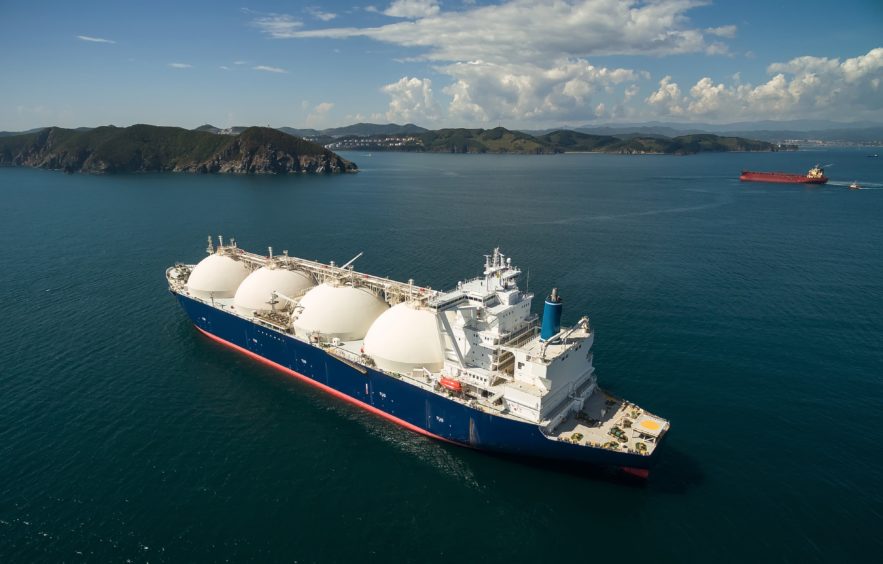
Asia remains the world’s largest and fastest expanding energy demand centre. Significantly, regional investments in the transition towards a cleaner energy system have maintained pace during the coronavirus pandemic.
This year and beyond, investment and demand expansion are all set to accelerate, particularly in liquefied natural gas (LNG). However, over the past year or so, there has also been an abundance of talk, speculation and policy statements around developing a hydrogen economy.
Still, natural gas and LNG will play a crucial role as a bridging fuel towards a low-carbon economy in Asia. “LNG is widely available to displace coal, LPG and diesel. The opportunity is not just about hydrogen,” Christophe Malet, senior vice president, Hanas New Energy Group, based in Singapore, told an online seminar exploring the role of hydrogen and LNG in the Asia Pacific energy transition on March 25.
Malet added that there were plenty of small-scale LNG development opportunities, including LNG bunkering and downstream gas applications. “The objective is to make LNG available at a price competitive to other fuels. The infrastructure and logistics are increasingly being developed that make LNG available at a cost which has never been so competitive,” said Malet.
Companies, such as ITP Interpipe, which offers innovative flowline solutions for LNG and hydrogen applications, are helping to drive the costs of LNG lower. Applications, such as jetty-less offshore cryogenic transfer and onshore buried cryogenic transfer piping solutions, provide opportunities for major savings on capital investment, as less infrastructure is needed, Arnaud Humbert, head of ITP Interpipe in Asia, told the conference, which was presented by ITP Interpipe. A subsea cryogenic pipeline solution is two to three times cheaper than a jetty solution, said Humbert.
Significantly, subsea and onshore buried pipelines, which avoid the surface transportation of cryogenic fluids, offer plenty of added value, especially in archipelagos, such as the Philippines and Indonesia. The field proven applications work well in congested areas, such as ports, airports, populated communities and renewable energy developments, said Humbert. Aside from cost savings, they offer environmental and technical advantages too.
“It’s easier to deploy a pipeline versus a jetty. But the safety and environmental aspects are important as well. Underground and subsea cryogenic pipelines avoid interference with marine traffic and local communities. They also limit the footprint of local infrastructure,” added Humbert.
ITP Interpipe is studying or has completed projects in India, Thailand, Singapore and Australia. The markets, particularly in relation to LNG and hydrogen are very active, said Humbert.
Australia, along with countries in northern Asia, such as Japan and South Korea, are actively trying to develop hydrogen economies. Australia has set a goal to be among the top three exporters of hydrogen to Asia by 2030, Fiona Simon, chief executive of the Australian Hydrogen Council, told the conference. Japan, South Korea, and even Germany, are eager to explore importing hydrogen from Australia, she said.
Simon said that Australia will need to produce one kilogram of hydrogen for under $2 by 2030, compared to a cost of $6 today, to be competitive. This is consistent with statements made by Japan and South Korea about the desired price needed to make hydrogen imports competitive, she added.
For hydrogen to compete against residential gas in Australia, the price would need to be closer to $1.10 per kilogram to be competitive, unless there is a strong carbon signal, added Simon.
Moreover, the hydrogen sector remains at an embryonic stage and a lot of work still needs to be done. Going forward, Australia needs to formalise a concrete development plan covering economics, regulations and social licenses, as well as collaboration with Asian markets, said Simon.
Indeed, despite all the excitement, the reality of developing a hydrogen economy remains far from certain. Hydrogen has been touted at the future of energy several times over the past 50 years but has never been successfully commercialised. Today, the driver for renewed interest in hydrogen is climate change mitigation. Australia, Japan and South Korea, are certainly enthusiastic about hydrogen’s future. Whilst, in the near future, Asia will be relying on LNG as a fuel to a lower-carbon world, many large and specialised industry players are focused on development to meet technical and competitive requirements for hydrogen to play a larger role in the world’s future low-carbon energy mix.
On March 25, 2021, ITP Interpipe presented an online seminar exploring the role of hydrogen and liquefied natural gas (LNG) in the Asia Pacific energy transition. The conference, part of the Future Energy Asia series, attracted an audience in excess of 500 people.
